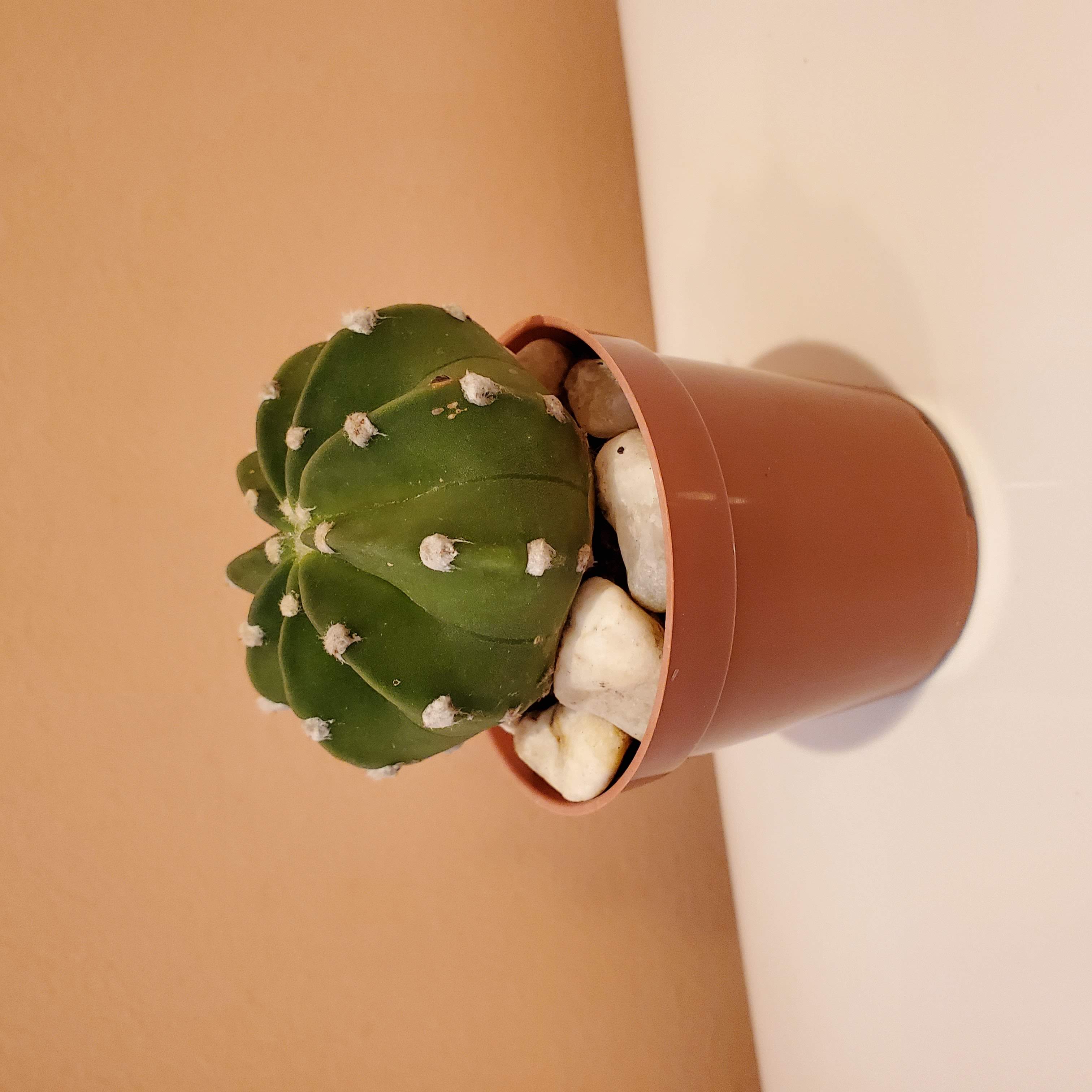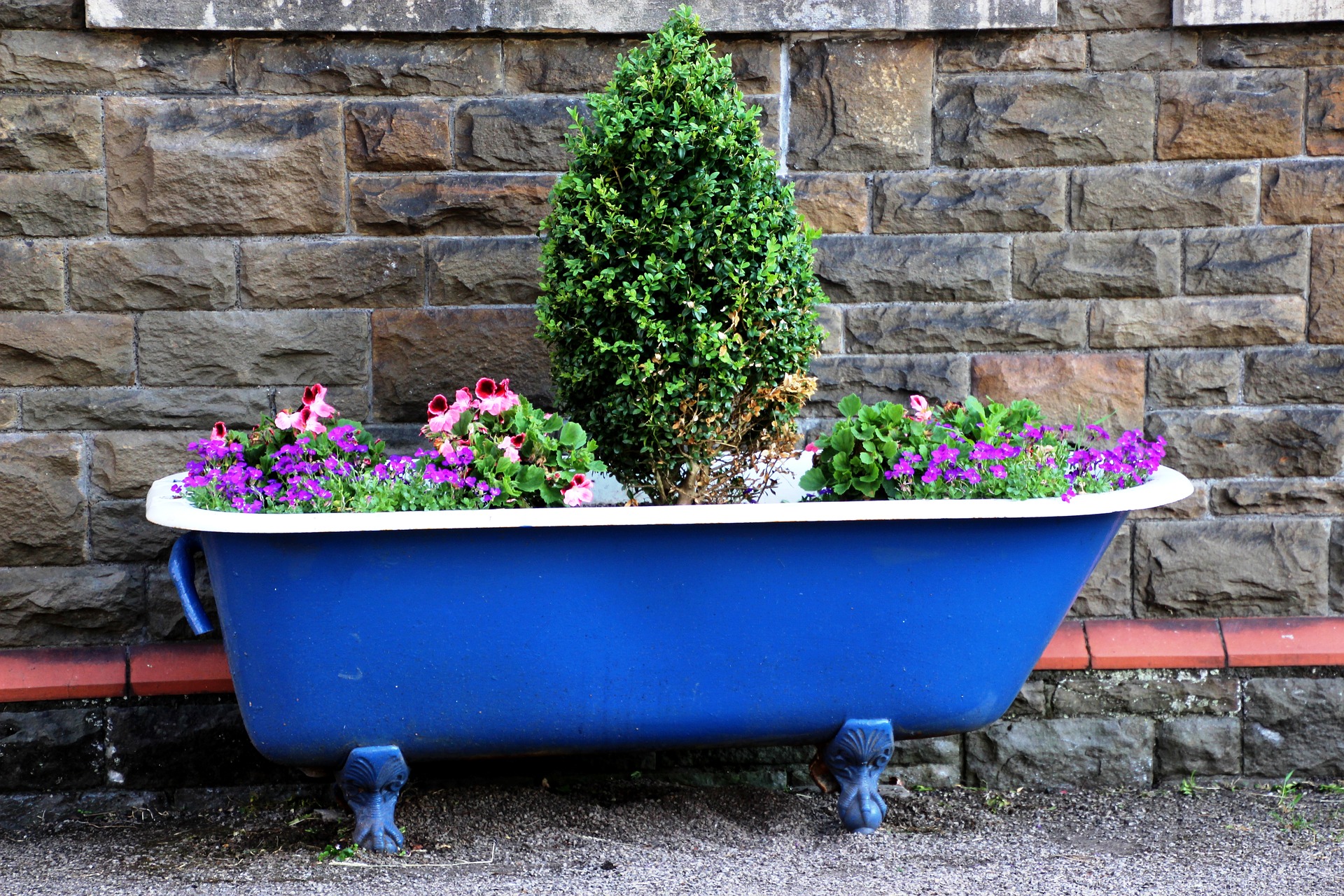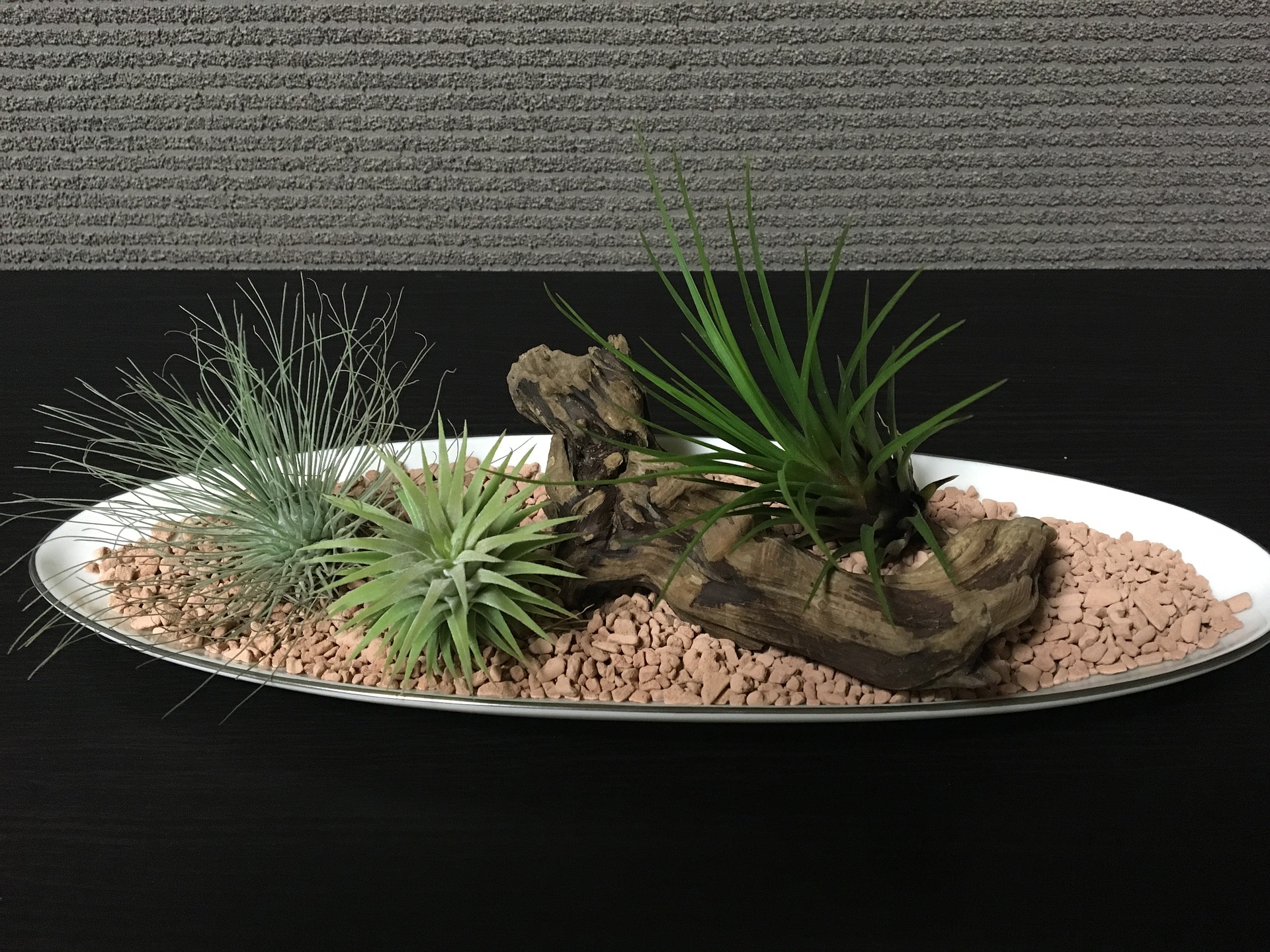- Home
- Container Garden Basics
Container Gardening Basics
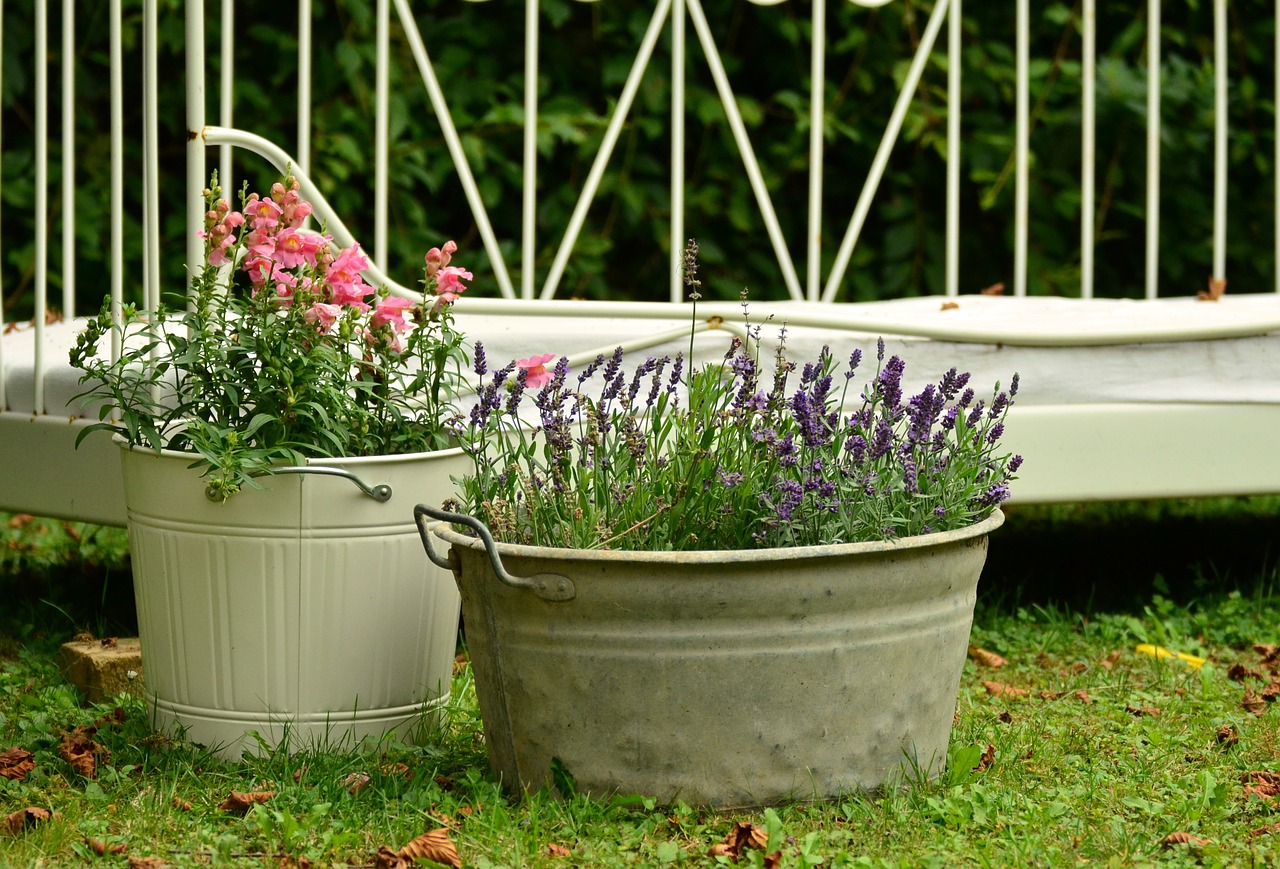
This article covers the container gardening basics that you’ll need for successful gardens in pots.
First, what is container gardening? Well, it’s the practice of growing plants in a container rather than directly in the ground. That can include container-grown vegetables and herbs, houseplants, terrariums and other types of indoor or outdoor planter gardens.
What do you need for a container garden?
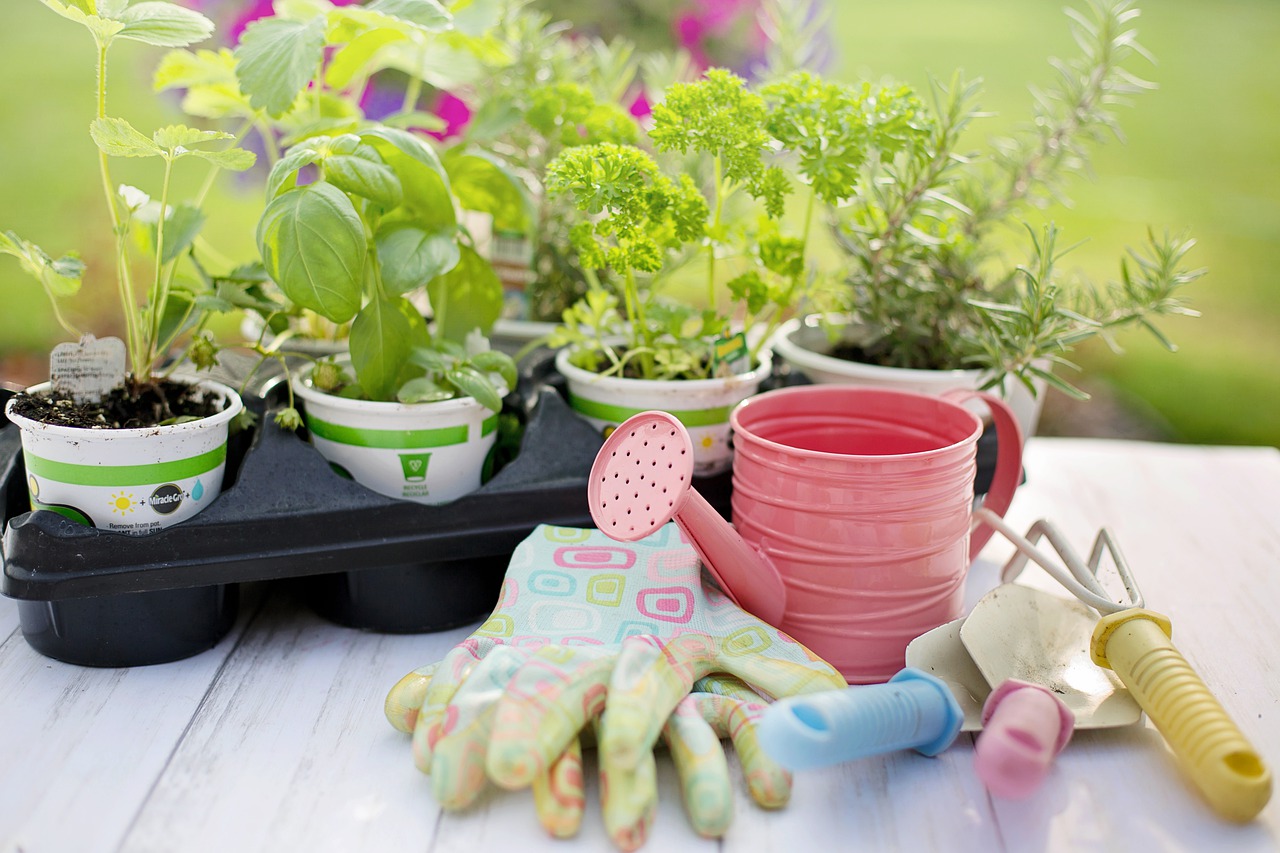
The first container garden basics are your supplies and the container itself. These are some supplies you’ll need to gather to build a container garden:
- A container which could be a planter or flowerpot, but there are many other options you could choose,
- Potting soil
- Plants
- Optional: rocks or gravel, decorative moss, accessories such as figurines, signs, etc
Things to use for container gardening
What container can you use for container gardening?
Almost anything. For example: planters, flowerpots, barrels, buckets, dishware, recycled food containers, old pots and pans, even wine glasses and coffee cups.
Keep in mind that the material of your container will determine how frequently you need to water. Terra cotta and wood will dry out more quickly than glazed ceramic, glass or plastic.
How do I start a container garden?
Starting a container garden is really quite easy. Just follow these container gardening basics steps (and see the more detailed tips below):
- Select a location for your container garden. That could be indoors (on a table or countertop), wall hanging planter, windowsill, window box, porch, or outdoors on the patio.
- Choose a container and some plants.
- Add drainage holes to the container, if it doesn’t already have them.
- Fill the container half full with potting soil.
- Remove the plants from their nursery pots and place them on top of the soil.
- Fill up the container with soil so it is level with the top of the soil around the plants.
- Optional: add accessories or decor to your pot, such as decorative moss, small pebbles, figurines, etc.
What are the best flowers for containers?
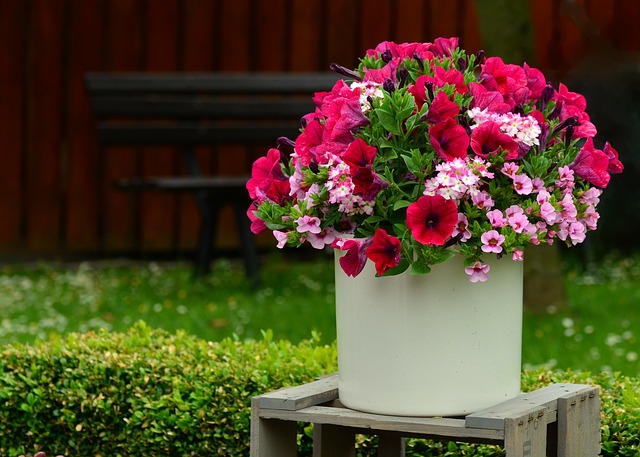
You can really plant any flower in a container that you could plant in your garden, including annuals or perennials. You can also plant flowering bulbs such as tulips or amaryllis in a pot.
For indoor container flower gardening choose a flowering plant that will be happy in the location that you’re choosing - most flowering plants will be happiest and continue to flower in a sunny spot. Common indoor flowering plants include orchids, flowering kalanchoe, and chrysanthemums.
What are the best plants for container gardening?
The best container gardening plants will depend on a few factors: size of your container, location, amount of sun, and how much you will be watering.
These are some container gardening basics tips for selecting your plants:
Don’t purchase plants without a plan
If you just go to the nursery to “see what they have” you are likely to come back home with plants that (a) are not compatible with each other, and/or (b) won’t thrive in the container size or location that you’ve selected. Before you go to buy your plants, know what size of plants you need, how many, and what sun and water conditions you will be providing so you will come home with plants that fit your situation.
Select compatible plants
Choose plants for a single container that will grow well together: same light and water needs, similar growth habits (so an aggressive grower doesn’t quickly overpower the other plants in the container), etc.
Research your plants
Research each of the plants that you purchase, so you know what they are and their needs: read the plant tag, or research them online. It’s not only helpful in knowing what light and water you should be giving them, but it’s also interesting to know something about the natural habitat of your plant, how large they will get, when they will flower, etc. Also pay attention to whether it’s an annual (will last just one season) or perennial (continues to grow), and for perennials that will be outside, what zone they can live in (and what zone your landscape is). You also need to know the plant’s “shape” as it grows (which may not be the same as the small nursery plant you purchased): will it grow tall? Will it trail over the edge of the container? Is it a spreading groundcover? Will it get bushy? It’s good to have a combination of plants with height, spread, and trailing habits.
Give the plants time to acclimate
Remember that plants are living things, and need time to acclimate to any change. When you first plant them up, they may not look their best for the first few weeks. Try to avoid any drastic changes in lighting, temperature or water during that initial period, and if the container will be going into a full sun location, do so gradually so the plant leaves don’t burn. Similarly, if your container will be outside during the summer months, but brought inside during the winter, do so gradually or provide an adjustment period so the plants will get used to the change in environment.
What vegetables are best for container gardening?
You can easily grow your own food in container gardens: vegetables, herbs and fruit. For example, any of these do quite well in vegetable container gardening: lettuce, spinach, mint, lemon balm, basil, nasturtiums, pansies (edible flowers), tomatoes, strawberries, and peppers.
Container gardening basics - 7 top tips
Finally, make sure to pay attention to these seven tips to make your experience with container gardening a successful one:
Container gardening basics tip #1: Water needs to drain
A good container garden needs to have excellent drainage so your plant roots don’t rot. Make sure containers have holes in the bottom, or a method (such as gravel or a “false bottom”) to manage keeping the plant roots out of any standing water. If water stands at the bottom of the container, it will rot the roots, eventually killing your plant. Even containers sold as plant pots don’t always have enough holes for adequate drainage. You can create additional holes by drilling, punching or carving, or increase the size of the existing holes. Holes should be at least a half inch for small or medium pots, and an inch in size for large pots.
Also, avoid over-watering your plants. More container plants die from watering issues than any other reason. It’s easy to know when you’re under-watering - most plants droop when they are thirsty. But the signs of over-watering are often not visible until it’s too late. Different types of plants have different watering needs: some like constantly moist soil, some prefer to be watered as soon as the surface of the soil dries out, and others need the soil to be completely dry before you can water again. So research the needs of your plants so you know when it’s time to water.
Container gardening basics tip #2. Match the available lighting with your plants’ light needs
If you’re not sure how much light is available in the spot you’ve selected for the container, then place the container in the location for a day and time how long it gets direct sunlight, and how long it seems to have bright indirect light (such as in a north-facing window). There are also sun calculator apps that you can download that will tell you how much sunlight the container is getting.
Container gardening basics tip #3. Don’t forget to feed your plants
It’s easy to remember (usually) to water them - most plants will droop when they need watering. But don’t forget that your container plants need food also. When they’re grown in a container, the roots can’t seek out sources of nutrients like they can when planted in the ground. You can mix slow-release fertilizer into the soil, or add a little liquid fertilizer to the water every few times that you water your plants. If you have a fish tank or pond, the water will have natural nutrients in it that your container plants will love. Use some of your old fish tank water whenever you change the water and put it on your plants (if it’s a healthy fish ecosystem, it will smell earthy not fishy).
Container gardening basics tip #4. Sometimes plants will die
Realize that a container garden is an evolving ecosystem, and no matter how good of a gardener you are, some of your plants will die. Just because a plant dies doesn’t make you a “bad plant parent”. Sometimes individual plants are just sickly. Perhaps they were accustomed to a very different nursery environment than is “typical” for that plant species. So know when to give up on your plant (it’s dead, or going to die) and remove it from the container. You can put a new plant in its place. You may choose to rehab the unhappy plant (perhaps it just didn’t like the conditions in that particular container and will improve with a little individual TLC), but sometimes you just will have to ditch it and move on. Before removing it from the container, you might try just cutting it back drastically (trim off almost all the above-ground foliage and stalks) and see if it regrows.
Container gardening basics tip #5. Watch for sick plants
Keep an eye out for signs of disease or pests in your container garden. In particular, if just one plant appears to show signs of serious disease, it’s best to immediately remove it and either throw it out, or quarantine it in a separate pot away from other plants.
Container gardening basics tip #6. Choose the right soil for your plants
Not all plants will thrive in dense, rich potting soil (for example, succulents and cacti like to have a much grittier mix).
Also, some plants prefer to be “root-bound” while others like to have lots of room to spread.
Container gardening basics tip #7. Choose a container garden to fit your lifestyle
Be realistic in how much upkeep you’re willing to commit to: some types of containers are a lot of work. If you don’t enjoy dead-heading, repotting and fertilizing every single weekend, then choose low-maintenance plants for your container. If you’re a helicopter plant parent who enjoys tending your plants, then don’t select plants that will easily die from over-watering, or that grow slowly and need little attention.
Check back to the list on the homepage to see the different types of container gardens, and choose the one that best fits your needs and available space and time. Then follow these container gardening basics and enjoy your garden in pots!
- Home
- Container Garden Basics
